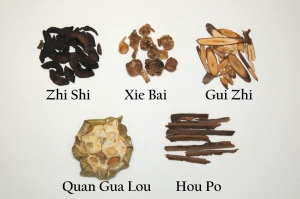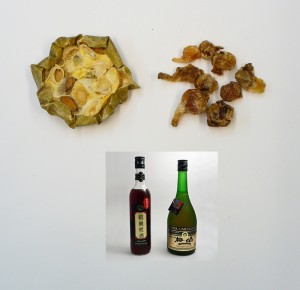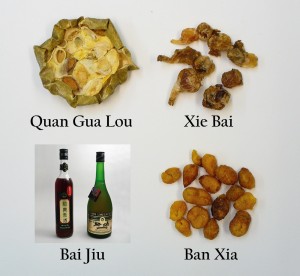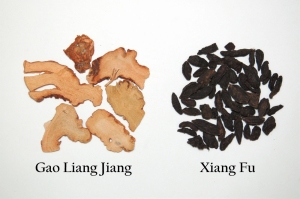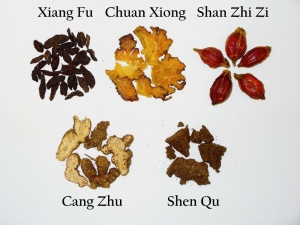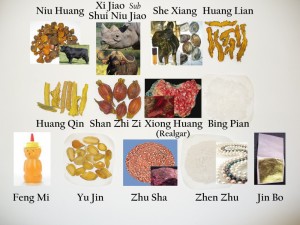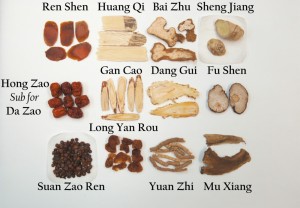Ding Chuan Tang “Arrest wheezing decoction” and Xiao Qing Long Tang “Minor bluegreen dragon decoction” both treat conditions characterized by wind-cold invasion at the exterior and obstruction or accumulation in the interior.
Ding Chuan Tang is used to treat wheezing and dyspnea due to exterior wind-cold and interior phlegm heat. Patients suffering from this syndrome usually already have abundant phlegm that is thick, sticky and yellow. When the wind-cold attacks and constricts the Lung, the descending and dispersing functions of the Lung may be further inhibited, causing phlegm stagnation and heat. A yellow, greasy tongue coating and slippery, rapid pulse both indicate heat and phlegm accumulation in the body.
Ingredients: Ma Huang, chief, releases exterior wind-cold, ventilates the Lung. Bai Guo, eliminates phlegm and astringes Lung Qi. Zi Su Zi, Ku Xing Ren, Ban Xia and Kuan Dong Hua, eliminate phlegm and direct the reversed flow of qi downwards. Sang Bai Pi and Huang Qin clear Lung heat. Gan Cao harmonizes the herbs.
Xiao Qing Long Tang treats conditions characterized by wind-cold invasion at the exterior and water accumulation in the interior. Water retention in the chest causes a stifling sensation in the chest and the inability to breath properly when lying in a horizontal position. Diagnostic signs for selecting this formula include profuse, clear or white nasal discharge or sputum, with aversion to cold, absence of sweating, dyspnea or cough with a white tongue coating. There should be no signs and symptoms of heat. Aversion to cold, fever, and absence of perspiration are caused by the wind-cold factor at the exterior. Cough, dyspnea and wheezing are the result of reversed flow of Lung qi, which is secondary to win d-cold attack and phlegm accumulation. Profuse, watery sputum, heaviness and pain of the body, swollen face and extremities, and a white, slippery tongue coating all suggest water accumulation and the failure of the Lung to metabolize water. The superficial pulse indicates that the disease is located at the exterior.
d-cold attack and phlegm accumulation. Profuse, watery sputum, heaviness and pain of the body, swollen face and extremities, and a white, slippery tongue coating all suggest water accumulation and the failure of the Lung to metabolize water. The superficial pulse indicates that the disease is located at the exterior.
Common ingredients: Ma Huang, Ban Xia.



